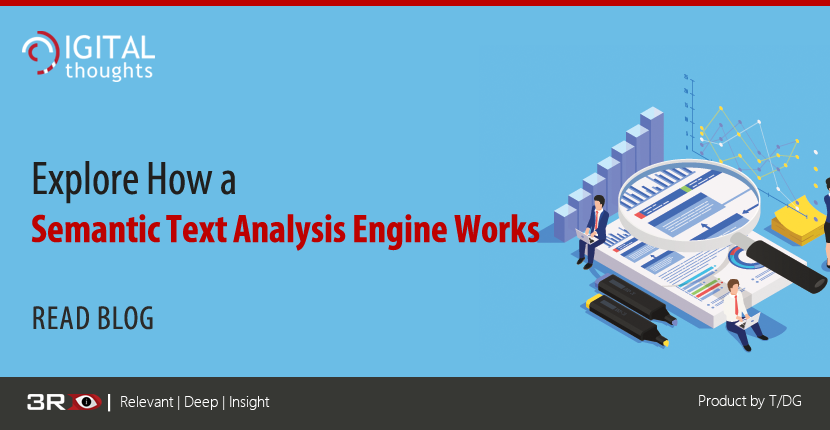Understanding How a Semantic Text Analysis Engine Works

Wikipedia defines Semantic search as “Semantic search seeks to improve search accuracy by understanding the searcher's intent and the contextual meaning of terms as they appear in the searchable dataspace, whether on the Web or within a closed system, to generate more relevant results.”
In other words, semantic search is an entirely different approach when it compared to the more common keyword-based search approach that relies on matching keywords in the user’s query to the search results to find relevant results. However, with the semantic search approach, there is next level of search relevancy that is never possible with the keyword-based technique.
Enterprises today need a semantic text analysis engine in order to get the most relevant results from the highly complex unstructured data that is available with enterprises today. Since this data is unstructured and unoptimized, it just cannot be analyzed using the keyword-based technique. This is where a semantic text analysis engine like 3RDi Search comes to the rescue of the enterprises and their data analysis challenges.
Semantic Text Analysis with 3RDi Search
3RDi Search is a semantic data-platform that enables rapid data utilization & monetization within data-driven enterprises and is supported by state-of-the-art managed data & applications engineering and support services providing end-to-end data & solutions lifecycle management.
While “Search” is at the core of all 3RDi-based solutions, what you get is a much broader set of comprehensive data capabilities that spans data acquisition, search, research, discovery, data mining, and analytics, allowing you to leverage organizational data assets optimally.
Search Relevancy is always a significant challenge in most search implementations and is usually a major time-consuming and non-trivial sphere of focus and effort. The 3RDi Relevancy module is an extremely powerful declarative relevancy tuner and manager that provides a single unified workbench for your power-users and search administrators to manage and maintain search relevancy – without any programming or search engineering knowledge.
Semantic Analysis Process with 3RDi Search
Semantic analysis within 3RDi, is split into several stages. In each stage, the system uses fast and superior algorithms that result in comprehensive enrichment and faster integration of content.
- Tokenization: Splitting text into individual sentences and words.
- Morphological analysis, stemming: Recognizing when two different word forms come from the same root word.
- Grammatical analysis, parts-of-speech tagging: Labeling when a word is used as a noun, verb, adjective and adverb, etc.
- Word sense disambiguation: Refers to identifying the context of a word in the query. For example is "crane" in a given text a type of bird or a type of machine.
- Vocabulary, ontology mapping: Exploring to find synonyms or words similar in meaning to the word in the query. For example, does “crane” have synonyms or does “crane” belong to a class of “construction automobile”.
- Linked Open Data: Refers to mapping to other relevant sources of information to help the user learn more. For example, linking to Wikipedia, DBpedia for useful information about, say, manufacturers of “crane”.
Semantic Search matches items intelligently across unstructured data by enriching the data with semantic information during indexing. This makes a semantic text analysis engine a must-have for every enterprise today in order to overcome challenges in data analysis and gain the competitive advantage with the power of data.
